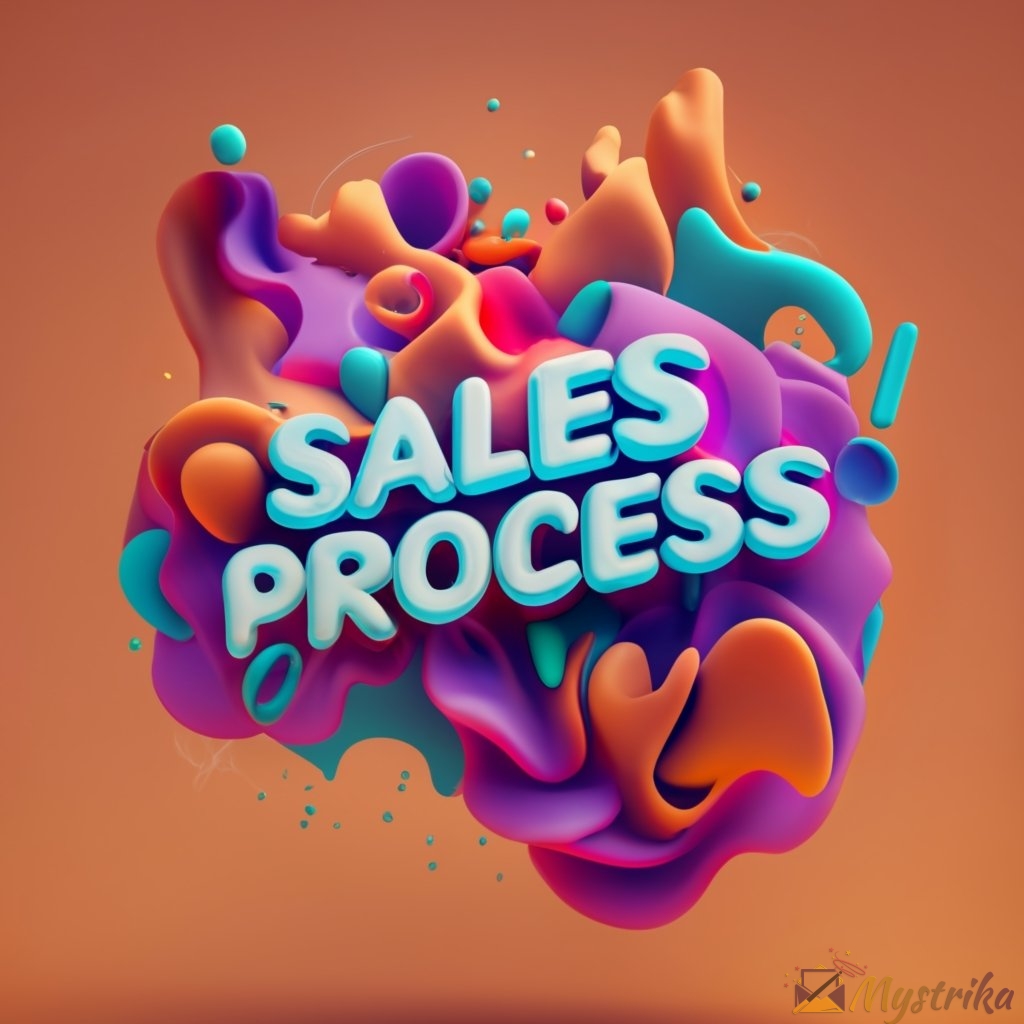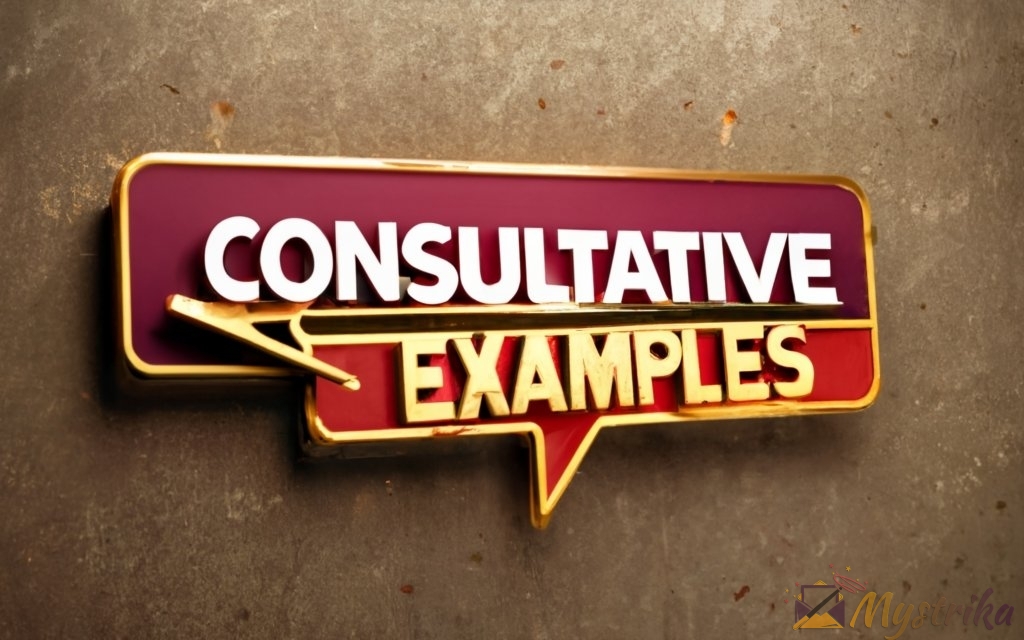How does a sales rep go from random product peddler to trusted advisor? Consultative selling.
This guide covers everything from real-world examples to mistakes to avoid when implementing this customer-centric sales approach.
What is Consultative Selling?
Consultative selling is a sales methodology that prioritizes building trusted relationships and understanding customer needs above pitching products. Unlike traditional sales approaches that focus on “closing” deals, consultative selling takes a more nuanced approach to guide customers to the right solution.
Defining Consultative Selling
The consultative sales method is all about positioning yourself as an expert consultant who can provide strategic advice, not just sell stuff. The goal is to develop a deep understanding of each customer’s unique situation, challenges, and objectives. With this insights gathered, the salesperson can then craft tailored solutions based on the customer’s needs.
Some key aspects of consultative selling include:
- Asking thoughtful, open-ended questions and actively listening to understand the customer’s specific needs, pain points, and goals. Sales reps act as advisors instead of product pushers.
- Providing education and expertise that helps the customer make the right purchasing decision for their business, not necessarily the one that makes the biggest commission for the sales rep. The focus is on long-term value.
- Co-creating solutions collaboratively with the customer instead of just presenting them with generic, one-size-fits-all pitches. This customization and personal touch builds trust.
- Establishing ongoing relationships and partnerships that extend beyond the initial sale. By providing ongoing value, the sales rep becomes a trusted advisor that customers want to work with again and again.
Unlike traditional transactional sales focused on immediate results, consultative selling focuses on the long game of nurturing lasting, mutually beneficial relationships between provider and customer.
Trust Over Transactions
At its core, consultative selling revolves around building high-trust relationships with customers. This stands in contrast to more traditional sales tactics that prioritize closing sales over establishing connections.
Some old school sales tactics that consultative selling aims to avoid include:
- Leading with a product pitch before diagnosing the customer’s needs
- Using high-pressure tactics to force a quick sale
- Treating the customer like a target rather than a valued partner
- Focusing solely on immediate transactions over long-term relationships
Consultative sellers position themselves as trusted advisors from the very first interaction. They take time to get to know the customer, ask thoughtful questions, and provide expertise to guide them towards the right solution.
While consultative selling may involve more upfront investment compared to transactional methods focused on closing quick deals, it pays off with loyal lifetime customers and increased repeat business. According to research by the Wharton School, it takes 5-7 interactions to establish trust with a customer, but after that it leads to a 356% increase in purchase frequency.
Customer-Centric Focus
At its heart, consultative selling is a customer-centric sales approach. Instead of starting with talking up products and services, the consultative sales process starts with the customer – seeking to fully understand their unique situation from their perspective.
This stands opposed to more product-focused sales methods that start with promoting features and capabilities before digging into the customer’s world. Consultative sellers flip the script to lead with customer insights.
Some ways that consultative sellers keep the focus on customers include:
- Asking probing questions and intently listening to understand pain points
- Researching the customer’s business and industry to spot potential challenges
- Making recommendations based on the customer’s needs, not predetermined quotas
- Providing tailored content like case studies directly related to the customer’s situation
- Following up consistently to prove ongoing commitment to the customer’s success
Consultative selling is all about elevating the customer’s experience over the seller’s agenda. Sales reps act as trusted advisors whose only goal is helping the customer achieve their goals. This genuine focus on the customer lays the foundation for an enduring and mutually profitable relationship.
Understanding Over Selling
In consultative selling, taking the time to deeply understand customer needs takes priority over rushing to make sales pitches. Sales reps ask probing questions, actively listen, and provide expertise to guide buyers towards optimal solutions.
Contrast this with the traditional product-focused sales process:
Traditional Sales Process
- Introduction and small talk
- Product capabilities pitch
- Handling objections
- Closing the sale
Consultative Sales Process
- Introduction and building rapport
- Questioning and active listening
- Providing insight and expertise
- Presenting solutions tailored to needs
- Guiding customer to optimal decision
While traditional sales reps jump into product pitches, consultative sellers focus on upfront relationship building through in-depth customer discovery. This phase of questioning, listening and learning lays the groundwork for crafting customized solutions later on.
Consultative selling certainly takes more upfront investment and patience compared to traditional sales methods. But this deep understanding of the customer ultimately leads to higher sales success and customer loyalty long-term.
So while traditional selling is focused on quick results, consultative selling plays the long game of nurturing relationships by making the customer feel truly heard and understood. This customer-first foundation fosters trust and sets the stage for fruitful long-term partnerships.
In Short
At its core, consultative selling is all about relationships over transactions, customers over products, and understanding over selling. By taking the time to get to know customers as trusted advisors rather than product peddlers, consultative sales reps are able to guide buyers to the right solutions.
While consultative selling requires more patience upfront, it wins in the long run by fostering enduring relationships that lead to repeat sales and invaluable customer loyalty.

Key Principles of Consultative Selling
While every company will put their own spin on consultative selling, there are some core principles at the heart of this customer-focused sales methodology:
Asking Questions and Active Listening
Asking the right questions and actively listening to understand customer needs is the foundation of consultative selling. This is how sales reps gain crucial insights into the customer’s world to guide them to the perfect solution.
Consultative sellers use open-ended questions to spark detailed discussions. Some examples include:
- “What are your main priorities this quarter?”
- “How do you measure success for this initiative?”
- “What led you to search for a new solution?”
- “How might accomplishing X impact your business?”
These types of open questions encourage the prospect to speak freely and fully explain their situation. This provides much more valuable context than closed yes/no questions or immediately pitching products.
Active listening is just as important as asking good questions. Consultative sellers focus intently on what prospects say, ask thoughtful follow-up questions, and give visual and verbal cues like nodding along to show they are engaged.
This active listening accomplishes a few things:
- It builds trust and rapport by showing sincere interest in the customer’s perspective.
- It uncovers deeper insights that would be missed with passive listening. Customers open up more to sales reps who truly hear them.
- It ensures the sales rep fully grasps the customer’s needs before presenting solutions.
Asking the right questions and intently listening to the answers helps consultative sales reps guide buyers to optimal purchasing decisions.
Providing Tailored Solutions
Unlike product-focused sales that pushes the same generic pitch on every buyer, consultative selling is all about crafting tailored solutions based on each customer’s unique needs.
After asking questions and listening to understand the customer’s specific situation, the consultative seller compiles those insights to create a customized recommendation.
For example, after learning a customer needs to improve team collaboration, the consultative seller could recommend:
- A enterprise package of a project management tool with robust permissions controls
- Integration with the customer’s existing communication apps
- Set up of a formal on-boarding and training program
- Weekly usage reports to ensure adoption across the organization
This demonstrates how the sales rep used their deep understanding of the customer’s needs to recommend a solution tailored specifically for them.
Some best practices for providing tailored solutions include:
- Pulling key pain points and needs identified during questioning
- Researching which product capabilities would address each need
- Bundling products/services in a customized package
- Making configuration recommendations based on the customer’s processes
- Drafting proposals that speak directly to the customer’s goals
While it takes more work upfront, this tailored approach makes customers feel truly heard and gives consultative sellers a huge competitive edge.
Positioning Yourself as a Trusted Advisor
At the heart of consultative selling is establishing yourself as an expert consultant that the customer can trust, not just another salesperson trying to make a commission.
Some ways consultative sellers position themselves as trusted advisors rather than vendors include:
- Asking questions to guide the customer vs. pitching products
- Providing insight into industry trends and best practices
- Sharing case studies and success stories relevant to the customer’s needs
- Following up consistently to prove commitment beyond the sale
- Sending educational content to help the customer make informed decisions
Consultative sellers focus on building relationships first and closing sales second. They earn the customer’s trust by demonstrating extensive knowledge and understanding of their needs.
This advisor positioning is vital, as 59% of buyers say vendor trust is extremely important in selecting solutions. Establishing yourself as an authoritative expert gets customers’ attention and makes your advice stand out.
So instead of coming across as a typical sales rep, consultative selling is about elevating yourself into a trusted partner role.
In nutshell
The core pillars that hold up the consultative selling methodology are:
- In-depth questioning and active listening to understand customer needs
- Crafting customized solutions tailored to each buyer’s specific situation
- Positioning yourself as an expert advisor, not just another salesperson
By embracing these principles, consultative sellers are able to provide unmatched value to buyers through tailored recommendations and establish themselves as go-to partners for future purchases.
While initially more time intensive than traditional sales tactics, mastering these consultative selling fundamentals leads to higher customer satisfaction, increased lifetime value, and enduring mutually profitable relationships between provider and customer.

Benefits of a Consultative Selling Approach
Adopting a consultative sales approach offers a variety of advantages compared to traditional transactional sales methods. From building trust to earning customer loyalty, consultative selling focuses on maximizing customer lifetime value.
Establishing Trust and Stronger Relationships
The deepest benefit of consultative selling is the ability to establish trust and cultivate stronger relationships with customers.
By taking the time to understand customer needs instead of barraging them with product pitches, consultative sellers demonstrate genuine interest in helping the customer succeed. This focus on the customer first lays the groundwork for a relationship built on trust.
And this trust pays dividends in the form of:
- Increased customer lifetime value: According to the Wharton School, highly-trusting relationships lead to a 356% increase in purchase frequency over time.
- Higher sales success rate: Buyers who trust sales reps are 57% more likely to purchase than those who report low trust.
- Greater share of wallet: Customers who trust vendors are willing to pay a 16% premium compared to non-trusted providers.
- Ongoing referrals: 71% of B2B buyers indicate they would refer a trusted vendor to colleagues.
By prioritizing trust and relationships over short-term transactions, consultative selling maximizes customer lifetime value and sales success over the long-term.
Qualifying Leads More Accurately
Consultative selling improves lead qualification by uncovering customer needs early in the sales process.
Through active listening and questioning, consultative reps learn which prospects are genuinely interested versus those just kicking tires. This allows them to:
- Identify hot prospects to prioritize follow-up with
- Disqualify leads unlikely to have an actual need or budget
- Segment customers based on needs for tailored outreach
- Route leads to the sales rep or specialist best suited to help them
According to Forrester research, companies see 10% higher conversion rates when sales and marketing use collaborative lead scoring methods. By qualifying leads more accurately from the start, consultative selling improves conversion rates.
Boosting Customer Loyalty and Repeat Sales
The trusting relationships consultative selling fosters also translates to improved customer loyalty and increased repeat sales.
According to Deloitte, customer loyalty increases revenue by 5-10%.
Consultative sellers boost loyalty in a few key ways:
- Demonstrating deep knowledge of the customer’s needs makes customers more likely to trust them for future purchases.
- Providing tailored solutions rather than one-size-fits-all pitches makes customers feel valued.
- Establishing rapport through questioning and active listening improves the overall buying experience.
- Following up consistently and providing ongoing value beyond the initial sale builds enduring goodwill.
With consultative selling, it’s not about closing one-off transactions but nurturing lifelong customer relationships. This customer-centric focus is why consultative selling fosters greater loyalty and repeat sales over time.
The Bottom Line
While it takes more upfront investment on the seller’s part, consultative selling ultimately wins in terms of:
- Increased buyer trust and stronger relationships
- More accurate lead qualification and conversion rate lift
- Improved customer loyalty and lifetime value
- Higher customer retention and repeat purchase rates
So while traditional selling focuses on short-term transactions, consultative selling plays the long game of maximizing each customer’s value through relationship-building and loyalty.

Skills Needed for Consultative Selling
Mastering the art of consultative selling requires developing specialized skills beyond those needed for traditional transactional sales. By honing abilities like active listening and market knowledge, sales reps can provide maximum value to buyers.
Communication and Questioning Skills
Strong communication and questioning skills are essential for consultative selling.
Through thoughtful questions and active listening, consultative sellers learn about the customer’s needs, goals, and pain points. This intel allows them to provide tailored solutions.
Some skills for effective questioning and communication include:
Open-ended questioning: Asking open-ended questions (who, what, where, when, why, how) sparks detailed discussions versus closed yes/no questions. Reps should prepare open questions in advance to guide discovery.
Funneling: Funneling means asking broad questions first, then drilling down into specifics. This helps reps home in on key details.
Affirming: Affirming statements like “I see” and “That makes sense” show listenership. But reps need to avoid over-affirming, which can seem disingenuous.
Clarifying: Asking clarifying questions demonstrates interest and ensures understanding like “Could you elaborate on X?”
Summarizing: Summarizing key points helps reps synthesize findings and gives customers a chance to fill in gaps.
Conciseness: Being concise helps keep the conversation focused. Rambling questions lose the customer’s attention.
Consultative sellers need strong communication abilities, but they also must understand when not to talk. Silence allows customers to share more detail when given time and space.
So while traditional sellers focus on smooth talking, consultative sellers devote equal energy to careful questioning and listening. This customer-centric communication lies at the heart of consultative selling success.
Patience and Listening Skills
Patience and active listening skills are essential for any consultative seller.
Rather than rushing to close a sale, consultative selling requires investing extensive time upfront to understand customer needs before proposing solutions.
This means:
- Listening more than speaking – the 80/20 rule is recommended
- Avoiding interruption – let customers speak fully
- Following up – asking clarifying questions instead of moving on
- Note taking – recording key details demonstrates engagement
Consultative sellers focus completely on what the customer is saying without thinking ahead to what they will say next.
This undivided attention accomplishes several things:
- Demonstrates authentic interest in the customer’s perspective
- Builds trust by showing their viewpoint is valued
- Uncovers deeper needs that passive listening would miss
- Prevents misunderstanding by fully grasping customer issues
Active listening requires patience as customers tell their full story. By rushing the process, critical insights get missed. Forging enduring customer relationships through consultative selling takes time.
Product and Industry Knowledge
While communication skills help sales reps uncover customer needs, product and industry expertise is required to actually fulfill those needs.
Consultative sellers position themselves as trusted advisors by demonstrating extensive knowledge of:
Products and services: Knowing capabilities in-depth allows appropriate matching to customer needs. Gaps in understanding will be exposed through questioning.
Competitor offerings: Being familiar with alternatives allows comparison to own offerings to guide customers to the best fit.
Market trends and developments: Keeping up with the latest trends shows customers their advisor is on the cutting edge.
Common pain points: Understanding frequent customer challenges indicates ability to provide solutions.
Use cases: Knowing real-world applications establishes credibility and value.
Without strong expertise, the consultative seller cannot provide insightful guidance tailored to the customer’s situation. They lose credibility in the customer’s eyes.
Top performers invest substantial time staying up-to-date on products, competitors, and industry trends to provide competent consultative guidance.
Authenticity and Adaptability
Lastly, consultative selling requires authenticity and adaptability.
Every customer interaction is unique, so sales reps must adjust their consultative approach on the fly based on the individual buyer. This means:
- Relating to the customer as a real person, not just a sales target
- Blending questioning, listening, and advice fluidly based on responses
- Meeting customers where they are instead of sticking to a script
- Being attentive to verbal and non-verbal cues and changing course accordingly
Consultative selling is an inherently human process. Sales reps need self-awareness to build authentic connections with customers as fellow people.
They also need flexibility and quick thinking skills to adapt theirconsultative strategies to each buyer in real-time. There is no one-size-fits-all formula.
While traditional selling relies on sticking to polished pitches, consultative selling thrives through authenticity and adaptability.
Core Competencies
In summary, consultative selling rests on these core competencies:
- communication style that utilizes strategic questioning and active listening
- patience to invest extensive time in customer discovery
- expertise in products, competitors, and industry trends
- adaptability to pivot approaches based on customer needs
Consultative selling is not about flashy presentations or clever pitches. It centers on mindsets and soft skills that allow sales reps to make deep customer connections on a human level as trusted advisors.
Without developing abilities like active listening, market knowledge, and authenticity, achieving consultative sales success is difficult. But honing these skills allows reps to tailor solutions and provide maximum value to each buyer.

Step-by-Step Process for Consultative Selling
Now that we’ve covered the principles and skills needed for consultative selling, let’s walk through the step-by-step process top performers use to provide maximum value to customers.
Step 1: Research the Prospect Thoroughly
The consultative sales process begins long before the initial contact with thorough prospect research. This allows reps to enter discussions armed with insights to establish credibility and trust right away.
Some key areas for prospect research include:
Demographic info: Industry, company size, location, target market, organziation structure and more. This data provides an overview of the prospect’s landscape.
Pain points: Common challenges and pain points faced by similar organizations in their industry. This helps reps prepare to discuss relevant issues.
Key initiatives: Publicly stated goals, projects or challenges the prospect is focused on addressing. Reps can tie solutions to these directly.
Previous vendors: Past or present technology/service providers the prospect uses. Reps should understand how their offering compares.
Leadership: Names, backgrounds and priorities of key decision-makers. Reps can personalize outreach and conversations.
News: Recent news, acquisitions, product launches or other announcements related to the prospect. This provides conversation starters.
Website: Messaging, offered products/services, resources, case studies and other info on the prospect’s website. This shows how they describe themselves.
Social media: Active social media channels and types of content/engagement on each platform. This demonstrates brand voice and audience.
Reviews: Prospect reviews on sites like G2 and Capterra. Look for recurring praise and complaints.
The goal is to synthesize these findings into a deep understanding of the prospect’s world – challenges, goals, initiatives, processes and pain points. This allows reps to engage prospects in informed, relevant discussions right from the initial contact.
Step 2: Initiate Contact and Build Rapport
Armed with prospect insights, the consultative seller reaches out to initiate contact and build rapport.
Some best practices for outreach include:
Warm introductions: Get introduced by a mutual connection if possible for instant credibility.
Personalized messaging: Use what you learned researching the prospect to craft targeted outreach. Demonstrate you did your homework.
Thought leadership: Share relevant content like articles, case studies and guides that provide value. Avoid overt product pitches early.
Common ground: Highlight any shared connections, interests or experiences you uncover to establish rapport.
Follow up diligently: It may take 4-6 outreach attempts to get a response. Persistence pays off.
The goal is piquing the prospect’s interest by introducing yourself as someone familiar with their world who can potentially provide value. Done right, they will agree to an initial meeting.
Step 3: Ask Questions and Actively Listen
The heart of consultative selling happens in the discovery meeting where the rep asks probing questions and listens intently to uncover the prospect’s needs.
Some tips for effective questioning and listening include:
Funnel broad to specific: Start with high-level questions about priorities and challenges. Then drill down into specifics around initiatives, processes and pain points.
Ask “why”: Follow up vague statements with “why is that” or “why does that matter” to extract deeper meaning.
Take notes: Capturing key details shows engagement and provides reference points for follow up questions.
Paraphrase for clarity: Rephrase what you’re hearing in your own words and ask if you have it right to confirm understanding.
Manage time: Less talking by the rep means more time for prospect answers. Keep an eye on the clock.
Read body language: Note posture, eye contact, expression and other non-verbals to gauge engagement and assess responses.
Stay curious: Approach each meeting like an investigative reporter – asking who, what, when, where, why and how questions.
These thoughtful discovery conversations accomplish several things:
- Identify prospect pain points
- Uncover how they would define success
- Reveal key initiatives and priorities
- Highlight sources of friction
- Discover all stakeholders and processes
This intel becomes the blueprint for crafting tailored solutions in the next steps.
Step 4: Provide Expert Advice and Education
Now that the consultative seller understands the prospect’s needs, they can provide expert guidance and education to help identify optimal solutions.
Some ways reps add value through insight sharing include:
Case studies: Share success stories of helping similar companies overcome identical challenges.
Relevant research: Cite data and trends that shed light on the prospect’s problems from an outside perspective.
Playbooks: Provide frameworks, step-by-step guides and other tools to help prospects self-diagnose.
Peer connections: Introduce prospects to peers at other companies who have implemented solutions successfully.
Analyst reports: Reference credible third-party reports comparing solutions and vendors.
** ROI calculators:** Use tools to estimate the financial impact of implementing potential solutions.
Pilot programs: Offer free limited trials or pilots to let prospects test solutions and quantify benefits.
Webinars: Send prospects to recorded webinars or invite them to upcoming live sessions with subject matter experts.
At this stage, the seller curates helpful expertise and resources for prospects based on the needs uncovered during discovery. This positions the seller as a trusted advisor rather than a product pusher.
Step 5: Develop Customized Solutions
Next the consultative seller compiles findings from questioning and ongoing discovery dialogues to propose solutions tailored to the prospect’s specific needs.
Some tips for crafting customized solutions include:
Outline key challenges: Document each pain point and success metric outlined by the prospect.
Match to capabilities: Identify how product features and services address each specific challenge and goal.
Bundle offerings: Combine complementary solutions into integrated packages to deliver complete solutions.
Configure programs: Tailor solutions by selecting specific options, custom builds, service levels and terms that best suit the prospect.
Map processes: Outline how solutions fit into the prospect’s existing workflows and systems.
Set timeline expectations: Establish realistic timeframes for implementation, rollout, and quantifying ROI based on scope.
Propose pilot programs: Suggest controlled pilots or staged rollouts to demonstrate value incrementally.
Define success planning: Detail post-purchase success planning, training, support and optimization services included.
These customized proposals demonstrate the seller listened closely to the prospect’s needs and crafted bespoke solutions accordingly. This tailored approach provides exponential value compared to generic one-size-fits-all pitches.
Step 6: Follow Up and Provide Ongoing Value
The consultative sales process does not end once a deal closes. Diligent follow up and ongoing education is vital for customer retention and repeat sales.
Some keys for continuing value delivery include:
Ensure successful onboarding: Check in regularly post-purchase to guarantee a smooth implementation and address any issues.
Conduct reviews: Have regular account reviews to assess performance against agreed upon metrics and identify areas for improvement.
Provide added training: Supplement initial training with refresher courses, new user training as needed and advanced skill building.
Share insights: Send research, articles and analysis related to the customer’s goals and challenges on an ongoing basis.
Invite to events: Offer passes to industry conferences, user groups and other relevant in-person or online events.
Request referrals: Ask satisfied customers for referrals and testimonials to build credibility with new prospects.
Upsell judiciously: Wait for appropriate milestones or trigger events before discussing expansions – don’t over push.
Gather feedback: Check in to gather feedback on what’s working well and what needs improvement.
By providing ongoing value and insights, the consultative seller becomes a trusted partner that customers rely on far beyond the initial transaction.
In short
The consultative sales process differs from traditional transactional models by:
- Extensive upfront research before outreach
- Focus on relationship building over immediate deal making
- In-depth discovery questioning and listening
- Providing expertise to guide prospect decisions
- Custom-tailored solutions vs. one-size-fits all pitches
- Ongoing follow up and value delivery after the sale
While consultative selling is more involved than simply pitching products, this customer-centric process builds trusting advisor relationships that maximize customer lifetime value.

Real-World Examples of Consultative Selling
Let’s bring the consultative selling methodology to life with some real-world examples across a variety of industries.
Financial Advisor Providing Retirement Planning Advice
Retirement planning is a perfect scenario for consultative selling. Each client has unique needs, goals, risk tolerance and challenges.
In this example, a financial advisor uses in-depth discovery to provide customized retirement guidance:
The advisor researches the client in advance and sees they are nearing retirement age but have little saved to date.
In the initial meeting, the advisor asks thoughtful questions to understand the client’s full financial picture including income streams, living expenses, health considerations and family legacy goals.
The advisor actively listens and takes notes while the client shares challenges saving adequately due to putting kids through college and helping elderly parents. The client expresses apprehension about maintaining their current lifestyle in retirement.
Using expertise on retirement planning and market trends, the advisor educates the client on options like maximizing 401k contributions, enrolling in health savings accounts, strategic debt paydown, relocating to reduce costs, and insurance products to provide guaranteed income.
The advisor schedules follow-up conversations to discuss risk tolerance. They provide assessments to determine the client’s ideal asset allocation between stocks, bonds and other products.
Finally, the advisor proposes a customized financial plan including specific retirement savings vehicles, debt pay down strategies, relocation details, and insurance products tailored to the client’s unique situation and objectives.
By taking time to understand the client’s full picture, the advisor is able to provide sage guidance and a financial roadmap designed to maximize the client’s retirement readiness. This consultative approach cements the advisor as a trusted partner.
Car Salesperson Helping Customer Choose the Right Vehicle
Even big-ticket consumer purchases like cars can benefit from consultative selling.
In this example, a car salesperson uses discovery and test drives to guide the customer to the ideal vehicle:
The customer enters the dealership looking for a new SUV but unsure which model. The salesperson avoids immediately pushing them to the most expensive options.
Instead, they ask open questions to learn more about the customer’s lifestyle, budget, tech preferences, daily commute, cargo needs, family size and past vehicles.
The salesperson listens intently while the customer describes their home life shuttling kids to school and sports in a reliable family hauler that still feels fun to drive.
On the test drive, the salesperson allows the customer to take the wheel and ask their own questions about features and configurations. The salesperson highlights details like car seat anchor points, infotainment options and safety ratings tailored to the customer’s priorities.
Based on the customer’s input, the salesperson recommends an affordable midsized SUV with tons of cargo space and family-friendly tech features. They provide educational materials to reinforce how this model meets the customer’s needs.
By emphasizing the customer’s personal requirements over sales quotas, the salesperson uses consultative selling to ensure a satisfied buyer who will refer friends and family.
Enterprise Software Sales Rep Creating a Custom Bundle
Complex B2B software sales also thrive under a consultative approach.
Here’s an example of an enterprise software sales rep providing a tailored solution:
The sales rep does research before the initial call to understand the prospect’s technical infrastructure, current vendors, recent growth and pain points.
After introductions, the rep inquires about the prospect’s top initiatives, day-to-day inefficiencies and desired business outcomes in order to replace outdated legacy systems.
The prospect explains challenges managing data across siloed products that don’t integrate smoothly. They describe productivity bottlenecks and data gaps causing process breakdowns.
Based on these Discovery findings, the sales rep recommends a bundled solution including:
- Migration tools to smoothly transition existing data to new systems
- A CRM platform for integrated access to customer data
- Business intelligence software for advanced data unification and insights
- Technical support services for rollout and optimization
The rep provides educational materials explaining how the combined capabilities directly address the prospect’s needs. They outline an implementation roadmap accounting for technical prerequisites and user training.
This customized bundle demonstrates the sales rep’s consultative approach to understand the prospect’s environment and craft a bespoke solution matching their unique requirements and challenges.
Personal Stylist Suggesting Flattering, On-Brand Outfits
Consultative selling isn’t just for big B2B deals – it can provide value even in smaller one-on-one transactions.
Take this example of a personal stylist using consultative techniques:
The client has an upcoming cocktail party and wants a stylish new outfit but isn’t sure what’s right for her body type and personal brand aesthetic.
The stylist asks thoughtful questions about the client’s taste in designers, favorite shops, daily style, problem areas, lifestyle, and upcoming events.
Listen closely to the client describe her fashion sense as timeless and elegant with lots of solid colors and clean lines. The client admits she’s not sure how to dress in an edgy way for the cocktail party without veering away from her signature classic style.
Combining expertise in flattering fits, on-trend colors, and the client’s articulated preferences, the stylist suggests:
- Dark slim cut trousers that elongate legs
- A structured off-the-shoulder top in a vibrant jewel tone
- Understated earrings and heels
This polished yet edgy look flatters the client’s figure while maintaining her essential classic aesthetic. The client loves how the stylist listened and came up with the perfect solution.
While a small sale, the stylist’s consultative approach cements an ongoing relationship with the client who will return again and again.
Interior Designer Designing a Home Office
Even extensive B2C deals like whole home designs can benefit from consultative selling.
Here’s an example interior designer using this approach:
The designer schedules a discovery call to discuss the client’s needs and vision for their new home office space before drawing anything.
Through targeted open-ended questions, the designer learns the client works from home running a small ecommerce business. They need space for shipping inventory stored onsite so want lots of functionality without appearing cluttered.
The client describes their color preferences, work style, storage needs, entertaining habits, and how the space connects to the rest of the home. The designer gains a clear sense of the client’s functional requirements and aesthetic taste.
Only after thoroughly questioning the client does the designer shift into proposing ideas. The designer presents a few initial office layout options for feedback.
Based on the client’s input, the designer refines the best concept and presents one final office design maximizing efficient workflow, concealed storage, and an elegant style matching the client’s vision.
The designer could have skipped discovery and just presented the client with some stock home office layouts. But taking time to deeply understand the client’s needs enabled designing truly customized spaces that reflect their unique personality.
Key Takeaways
These real-world examples demonstrate some core tenets of consultative selling:
- Asking probing questions upfront before proposing solutions
- Listening closely to understand customer pain points and priorities
- Leveraging expertise to educate clients on ideal options
- Co-creating solutions tailored to each customer’s needs
- Establishing long-term partnerships beyond one-off transactions
Whether helping clients plan for retirement or pick out an outfit, consultative sellers focus on crafting bespoke solutions based on each individual’s needs. This customer-centric approach provides exponentially more value compared to generic, one-size-fits-all sales pitches.
While it takes patience and skill, consultative selling done right not only makes the sale but forges lasting mutually beneficial relationships between provider and client.

Common Mistakes to Avoid in Consultative Selling
While consultative selling offers many advantages, it also comes with pitfalls to be aware of. Avoiding common mistakes will help your team maximize results.
Failing to Listen to Customer Needs
One of the biggest mistakes is failing to devote enough time to understand customer needs before proposing solutions.
Without investing in discovery through thoughtful questioning and active listening, reps miss vital context. As a result, they end up pitching generic solutions that don’t actually solve the customer’s unique challenges.
This leads to:
- Missed sales from pushing the wrong solution
- Frustrated customers who don’t feel heard
- Weakened credibility due to lack of understanding
- Short-lived transactional interactions instead of enduring partnerships
Great consultative selling hinges on listening closely to identify tailored solutions. Skimping on upfront discovery undermines the entire methodology.
Pitching Before Establishing Trust and Understanding
Another common error is launching into product pitches before establishing trust and understanding with prospects. This puts the cart before the horse.
When reps lead with canned capability presentations instead of listening, prospects feel like just another sales target. Pitches land better once reps earn trust through discovery.
Other risks include:
- Overwhelming prospects with solution details before diagnosing actual needs
- Misalignment between pain points and proposed solutions
- Forcing prospects to make quick, uninformed decisions
By building relationships first through inquiry and listening, consultative sellers earn the right to make recommendations later once they grasp the full context.
Not Customizing the Solution to the Individual Client
Failing to tailor solutions to the individual prospect after thorough discovery is a frequent pitfall.
Taking time for inquiry then proposing generic, one-size-fits-all solutions squanders the opportunity. Customization is what sets consultative selling apart.
Consequences of neglecting personalization include:
- Solutions that only partially resolve customer challenges
- Perception that products rule the recommendations instead of customer needs
- Strained credibility by exposing shallow understanding
- Failure to stand out from the competition
Crafting customized solutions aligned to the prospect’s unique situation is the hallmark of consultative selling done right.
Being Too Salesy or Pushy
Coming across as salesy or pushy is an easy trap for consultative sellers if they are not careful. Nobody wants to feel pressured.
Some behaviors to avoid include:
- Talking too much instead of listening
- Over-promising without understanding needs
- Repeatedly insisting on an immediate decision
- Reflexively objecting to customer concerns
- Only discussing your own offerings instead of exploring competitors
The consultative seller’s role is guiding prospects, not manipulating them. Gentle guidance wins – hard sells backfire.
Neglecting Follow-Up and the Ongoing Relationship
The final common mistake lies in neglecting follow-up and ongoing customer relationships after the initial sale.
Consultative selling isn’t about transactions – it’s about nurturing long-term partnerships. This requires keeping engagement high post-purchase through:
- Regular success reviews
- Continuous education and training
- Proactive support
- Providing ongoing expertise and insights
- Relationship strengthening outreach
Dropping the ball after purchase risks:
- Low usage and adoption if customers are unsupported
- High churn when customers feel abandoned after buying
- Missing expansion opportunities without follow-up
- Failure to maximize customer lifetime value
Following up diligently is just as crucial as nailing discovery to achieve consultative selling ROI.
In nutshell
Avoiding these common pitfalls will help your team gain consultative selling proficiency:
- Don’t skip discovery – resist the urge to pitch immediately
- Build trust first before proposing solutions
- Customize recommendations to the individual prospect
- Stay helpful, never salesy or pushy
- Keep engaging with customers long after the initial sale
While it takes work, sidestepping these mistakes will allow your team to realize the full benefits of consultative selling – deepest customer insights, tailored solutions, trust-based relationships, and maximized lifetime value.

Tips for Improving Consultative Selling Skills
Consultative selling excellence doesn’t happen overnight. By incorporating the following tips, reps can master this customer-centric sales approach over time.
Ask Open-Ended Questions
One of the core consultative selling skills is asking thoughtful open-ended questions that spark meaningful discussions.
Closed yes/no questions elicit one-word answers, while open questions like “how?”, “why?” and “tell me more” encourage prospects to provide detail and context.
Some examples of open discovery questions include:
- “What are your top priorities this quarter?”
- “Walk me through your current process for _“
- “How do you measure success for this project?”
- “What factors into your vendor selection?”
- “How might solving this challenge impact your business?”
Phrasing questions to elicit talking rather than just answering trains reps to guide conversations rather than control them. This engages prospects in co-creating solutions.
Take Notes During Conversations
Active note taking is another critical skill for consultative sellers.
Taking detailed notes during discovery conversations and meetings accomplishes a few things:
- Captures vital customer challenges, goals and details to refer back to later
- Keeps the conversation organized when funneling between topics
- Displays genuine interest and engagement
- Allows reps to summarize key points and fill in gaps
By keeping diligent notes, consultative sellers demonstrate their commitment to truly understanding customer needs before proposing tailored solutions.
Research Prospects Thoroughly Pre-Call
While asking good questions is crucial, doing due diligence through pre-call research maximizes discovery effectiveness.
Some areas for pre-call research include:
- Current vendor landscape
- Common pain points
- Organizational initiatives
- Leadership bios
- Operations workflows
- Public announcements
Entering discovery conversations armed with context about the prospect’s world makes it easier for reps to drill down into specific challenges and priorities to address.
Pre-call research transforms sales reps from random cold callers into knowledgeable consultants – a key perception shift.
Follow Up Consistently
Consistent nurturing and follow up separate consultative sellers focused on long-term partnerships from short-sighted transactional reps.
Making follow up a habit not only generates repeat sales, it also reinforces the seller’s commitment to the customer’s ongoing success.
This requires proactively:
- Checking in on milestone progress
- Scheduling quarterly account reviews
- Providing training refreshers
- Sharing relevant insights and articles
- Asking for referrals and testimonials
By standardizing diligent follow up processes, reps build customer loyalty through demonstrating their perseverance beyond the initial sale.
Offer Tailored Content and Advice
Offering customers content and advice tailored to their unique situation is expected of consultative sellers.
Personalization shows customers their specific needs are important – not just closing deals.
Examples include:
- Sending case studies directly related to customer challenges
- Recommending peer connections facing similar scenarios
- Providing assessments to diagnose their readiness for solutions
- Sharing analyst reports comparing vendors using criteria they care about
Curating content that speaks to each customer’s interests separates consultative sellers from those who rely on generic, recycled pitches.
Continual Improvement Is Key
Mastering consultative selling is an ongoing journey of refinement. Building skills like strategic questioning, active listening, tailored advice, and tenacious follow up takes time and practice.
Consultative sellers constantly:
- Learn from experience and each unique customer interaction
- Seek feedback from prospects on what works
- Sharpen abilities through role-playing and coaching
- Stay on top of industry trends and product updates
With a commitment to continual improvement and iterations, any rep can evolve into a consultative sales master.

The Future of Consultative Selling
The consultative selling methodology will continue evolving in coming years as technology progresses and buyer expectations change. Some trends shaping the future of consultative selling include:
Increased Use of Technology
Advances in AI, predictive analytics, and sales tools will augment (but not replace) consultative selling activities.
For example, sales reps can leverage:
- AI-powered research to quickly gather intel on prospects before calls
- Conversation intelligence like call transcriptions to enhance notetaking
- Predictive lead scoring to identify qualified prospects for outreach
- CRM customization to tailor solutions to individual customers
But while technology assists with administrative tasks, relationship-building remains a human skill. Tools that help reps be more efficient allow them to focus energy on the critical human elements of consultative selling: discovery, listening, and advising.
So in the future, consultative sellers will delegate time-intensive tasks to technology in order to devote more time to cultivating customer connections.
Blending with Inbound Selling
Another trend is blending consultative selling with inbound selling strategies.
Inbound selling involves using content to attract and nurture prospects before any direct outreach. Tactics include:
- Blogging
- Social media engagement
- Webinars
- Interactive tools like assessments
These inbound activities help sellers demonstrate expertise and build recognition. Prospects that consume this content will be better informed and prepared for discovery conversations.
According to Forrester research, over 73% of B2B buyers now prefer inbound, self-directed buying vs. traditional sales rep interactions.
This underscores the need for consultative sellers to embrace inbound as part of their methodology. Attracting and nurturing prospects through inbound engagement will set the stage for productive discovery later on.
Focus on Empathy and Emotional Intelligence
Lastly, look for the principles of empathy and emotional intelligence to gain prominence in consultative selling.
Forward-thinking sales leaders recognize that establishing authentic emotional connections accelerates sales success. Studies show that emotionally connected customers buy more.
Consultative sellers who intently listen not just for content but feelings will excel. Developing genuine empathy for the customer’s perspective – their frustrations, challenges, goals – is the deepest form of understanding.
With the rise of social selling, buyers increasingly expect a human connection, not just transactions. Combined with consultative selling, emotional intelligence will drive more loyal, fruitful buyer-seller partnerships.
The Human Side Remains Vital
While asking the right questions, listening intently, and providing tailored guidance will incorporate more tech assistance, the human skills of authentic relationship building remain at the heart of consultative selling excellence.
No algorithm can decipher subtle emotions or forge trusted advisor relationships quite like perceptive, empathetic sales professionals.
As sales technology continues advancing, consultative sellers will be wise to double down on the irreplaceable human elements of their craft – curiosity, intuition and emotional connection.
After all, professional selling at its core involves simply one person helping another. No app can replace the power of that.

Consultative Selling Must Evolve Alongside the Buyer
For consultative selling to maintain its effectiveness, sales teams must continually adapt their approaches to match evolutions in buyer behaviors and expectations.
Customer centricity lies at the heart of consultative selling. To deliver the ideal experience, sellers need to constantly revise strategies to align with how different buyer generations want to engage, research, and buy.
Let’s explore some of the ways consultative sellers can evolve their methods to resonate with emerging demographics.
Millennial Buyers Crave Connection
The massive millennial generation combined with Gen Z now makes up the majority of the workforce. Their preferences differ from previous cohorts.
Studies show millennials value relationships over transactions in sales engagements. They prefer a consultative approach focused on partnerships versus traditional features-driven pitches.
But establishing connections requires understanding millennials’ unique expectations:
- They extensively research options online before engaging sellers.
- They expect ultra-personalization and customization.
- They desire flexibility and the ability to buy on their own terms.
- They favor experiences and value over physical products alone.
- They gravitate toward purpose-driven socially responsible brands.
Adjusting sales strategies based on these insights is key to appealing to millennial buyers through consultative selling.
Keep Evolving Alongside Tech-Savvy Customers
Enhanced access to information continues altering buyer behaviors across demographics.
According to Forrester, 77% of B2B buyers now conduct more than half their research online before ever contacting a seller.
This underscores the need for consultative sellers to adapt in areas like:
- Providing abundant helpful content for self-education
- Monitoring prospect online activity for awareness
- Leading discovery with unique expertise vs. capability pitches
- Guiding buyers to credible 3rd party research, not just marketing materials
- Listening and filling knowledge gaps rather than “telling”
Positioning yourself as an insightful guide vs. product pusher demonstrates value in a transparent information landscape.
Consultative sellers must continually evaluate how tech-empowered buyers are changing and adjust approaches accordingly.
Make New Generations Feel Understood
As millennials and Gen Z assume decision making roles, making these new generations feel truly understood takes on heightened importance.
Consistently asking questions to identify subtle generational preferences then tailoring solutions accordingly strengthens emotional connections with younger buyers in a consultative selling approach.
For example, calling out how a solution saves time and reduces effort might resonate more with overworked, efficiency-focused millennials versus emphasizing prestige or status.
Avoiding assumptions and recognizing generational nuances through deep discovery results in higher sales success and loyalty.
Leverage Emerging Communication Modes
Consultative selling has traditionally relied heavily on older communication modes like phone calls and face-to-face meetings.
But increasing preference for digital channels like live chat, messaging, and social among younger demographics requires sales teams to diversify outreach.
Blending video conferences, screen shares, collaborative documents, and online portal access into the sales process allows consultative sellers to nurture relationships on millennials’ preferred platforms.
Omnichannel consultative selling presents more touchpoints for personalized engagement and guidance.
Stay In Tune with Buyers
At its core, consultative selling must flex to adapt to the evolving needs, expectations, and behaviors of different buyer generations to maintain relevance and results.
By continually researching target demographics and fine-tuning strategies to maximize connections, consultative sellers can earn the trust and loyalty of customers across age groups, industries and roles.
Forward-looking sales leaders recognize that agility is just as essential as foundational methodology. Keeping a finger on the pulse of cultural change allows teams to shape nuanced consultative experiences that resonate profoundly with buyers both today and tomorrow.

Conclusion and Summary of Consultative Selling
In an increasingly crowded marketplace, making meaningful connections with customers is more valuable than ever. The consultative selling methodology offers a proven framework for building trust and maximizing lifetime value.
This customer-first approach focuses on deeply understanding buyer needs before proposing tailored solutions. By investing time upfront, consultative sellers earn the right to make considered recommendations later.
In summary, some core tenets of consultative selling include:
- Asking thoughtful questions – Open-ended inquiry and strategic listening uncovers customer pain points and priorities.
- Conducting diligent research – Discovering background intel allows sellers to engage prospects contextually.
- Establishing trust and rapport – Relationships founded on understanding drive sales, not manipulating transactions.
- Providing expertise – Sellers position themselves as trusted advisors sharing insights, not vendors hawking products.
- Co-creating customized solutions – Collaborating with buyers based on needs reinforces partnerships.
- Ongoing follow up and value delivery – The customer lifecycle extends far beyond the initial purchase.
While no methodology is one-size-fits-all, principles of consultative selling have withstood the test of time because they offer exponential value to both buyer and seller when executed skillfully.
Of course, exact strategies must flex to match evolving customer expectations and market landscapes. But the universal foundation of genuine human connection remains timeless.
In a technology-driven world, consultative selling delivers an irreplaceable personal touch. By taking time to truly see and listen to customers as partners instead of transactions, consultative sellers build loyalty that weathers any disruption.
In the end, selling simplifies down to one person helping another. Consultative selling offers a framework for keeping that human-to-human exchange at the core of every buyer interaction.
The customers of tomorrow will reward the sales professionals who take time to understand their needs, guide their journey, and build trust through consultative selling excellence.

Key Takeaways on Consultative Selling
Consultative selling is a strategic sales methodology focused on building trusted relationships by deeply understanding customer needs. Key insights include:
- Consultative selling revolves around asking thoughtful questions, listening intently, and providing expertise to guide buyers to ideal solutions.
- Key skills for consultative selling include communication abilities, patience, industry knowledge, and authentic flexibility.
- Consultative sellers invest substantial time upfront researching prospects and learning about their specific situations.
- During initial discovery, consultative sellers use open-ended questions and active listening to identify customer pain points and priorities.
- Consultative sellers position themselves as trusted advisors rather than product pushers by sharing insights and perspectives.
- Solutions are crafted collaboratively based on the customer’s unique needs versus presenting generic, one-size-fits-all pitches.
- Follow up and ongoing value delivery after the initial sale is crucial for customer retention and maximizing lifetime value.
- Avoiding common mistakes like failing to listen, pitching too fast, and neglecting customization is key to consultative selling mastery.
- Consultative selling must continually evolve alongside changes in technology, market landscapes, and buyer behaviors and expectations.
- At its core, consultative selling is all about building authentic human connections by seeing each customer as a unique individual to guide, not a sales target.
Mastering consultative selling takes work, but pays off exponentially through increased sales, stronger customer loyalty, and enduring mutually beneficial buyer-seller partnerships.
Frequently Asked Questions About Consultative Selling
Q: What is consultative selling?
Consultative selling is a sales methodology focused on building trusted advisor relationships with buyers by prioritizing their needs over making quick sales. It emphasizes asking questions, listening, and providing expertise to guide customers to ideal solutions tailored to their specific situations.
Q: How is consultative selling different from traditional selling?
Traditional selling tends to focus on promoting product features, overcoming objections, and closing transactions. Consultative selling instead devotes time upfront to deeply understand customer challenges before proposing customized solutions collaboratively. The focus is on long-term partnerships over one-off sales events.
Q: What skills does consultative selling require?
Key skills include strategic questioning, active listening, flexibility, patience, problem-solving, industry/product expertise, empathy, and emotional intelligence to forge authentic connections.
Q: What are the steps of the consultative selling process?
The typical process includes thorough research before outreach, initiating contact and building rapport, discovery through inquiry and listening, providing expertise and education, co-creating tailored solutions, closing the sale, and ongoing follow up and value delivery after purchase.
Q: How does consultative selling build trust and loyalty?
By taking time to listen and understand customer needs versus pushing products, consultative sellers demonstrate authentic commitment to customers as partners, not one-off transactions. This focus on helping the customer succeeds builds enduring trust and loyalty.
Q: How can we adopt consultative selling in our organization?
Steps to get started include training reps on strategic questioning, empathy and listening skills, implementing robust discovery processes, researching prospects before meetings, developing customized solutions for each buyer, and committing to consistent follow up and customer success practices.
Q: How do you avoid common consultative selling mistakes?
Avoid mistakes like failing to listen, pitching too fast, neglecting customization, being salesy or pushy, and lacking follow up by thoroughly training reps, monitoring call best practices, and ingraining a customer-first mindset throughout the sales organization.
Q: How must consultative selling evolve moving forward?
Consultative selling must stay on top of changes in buyer behaviors, expectations, preferred communication channels, and market landscapes driven by emerging generations, the impacts of technology, and other cultural shifts in order to maintain effectiveness.

